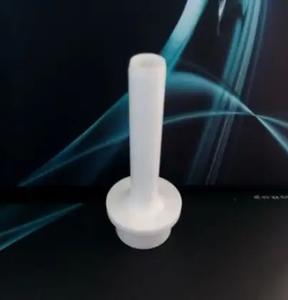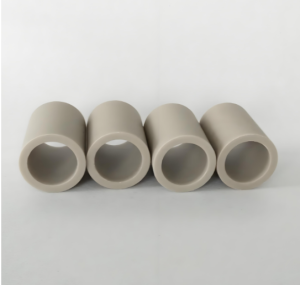Discover Premium Ceramic Products | Durability & Elegance United | Advanced Ceramics
1. Introduction
Just 24 hours ago, a major materials supplier in Germany announced a breakthrough in sintered silicon carbide (SiC) manufacturing, enabling crucibles with 99.9% purity and enhanced thermal shock resistance. This development underscores the growing demand for high-performance refractory components in semiconductor, metallurgy, and aerospace industries—sectors where the silicon carbide crucible remains indispensable.

Despite its industrial importance, confusion abounds online. Search trends show thousands of users mistakenly associating ‘silicon carbide ceramic dinner plates’ or ‘silicon carbide baking dishes’ with actual SiC materials. In reality, these consumer kitchenware items are typically glazed porcelain or stoneware—marketing terms have muddied the waters. True silicon carbide is a hard, brittle, ultra-high-temperature ceramic used almost exclusively in demanding technical applications.
2. What Is a Silicon Carbide Crucible?
A silicon carbide crucible is a container made from silicon carbide (SiC), engineered to withstand extreme temperatures—often exceeding 1,600°C (2,912°F)—while resisting chemical corrosion and thermal shock. Unlike traditional clay-graphite crucibles, SiC versions offer superior longevity and purity, making them ideal for melting non-ferrous metals like aluminum, copper, and zinc.
These crucibles are manufactured through processes like reaction bonding (RBSiC) or sintering, yielding dense, robust structures. RBSiC silicon carbide tile blocks, for instance, are often repurposed or adapted into crucible linings due to their mechanical strength and thermal conductivity.
3. Silicon Carbide vs. Boron Carbide vs. Silicon Nitride
When selecting refractory ceramics, engineers often weigh silicon carbide against boron carbide and silicon nitride. Each has distinct trade-offs:

- Boron carbide vs silicon carbide: Boron carbide (B4C) is harder and lighter but significantly more expensive and less thermally conductive. It’s preferred in armor and neutron absorption, not crucibles.
- Silicon nitride ceramic: Offers excellent thermal shock resistance and is less brittle than SiC, but it’s costlier and less chemically inert in molten metal environments. A silicon nitride crucible factory might produce lab-scale vessels, but they’re rare in industrial foundries.
For high-volume metal melting, silicon carbide remains the gold standard due to its balance of cost, durability, and performance.
4. Beyond Crucibles: Other Industrial Uses of Silicon Carbide
Silicon carbide’s utility extends far beyond crucibles. Its exceptional hardness and thermal stability make it ideal for:
- Silicon carbide burner nozzles: Resist oxidation and erosion in high-flame environments.
- Silicon carbide thermocouple protection tubes: Shield sensors in aggressive atmospheres.
- Silicon carbide ceramic tubes for furnace: Used as insulators or structural supports in tube furnaces.
- Silicon carbide brick and silicon carbide ceramic columns: Line kilns and reactors for uniform heat distribution.
- Silicon carbide ring and silicon carbide discs: Serve as wear-resistant seals or bearings in pumps and valves.

Even silicon carbide porous ceramic tubes find use in filtration systems for molten metals or hot gases.
5. The Myth of ‘Silicon Carbide Dinnerware’
A quick search reveals countless listings for ‘silicon carbide ceramic baking dish,’ ‘silicon carbide dinner ceramic plates,’ and even ‘silicon carbide ceramic Christmas plates.’ Despite the naming, these products contain no actual silicon carbide.
True SiC is black or dark gray, extremely hard (9.5 on the Mohs scale), and unsuitable for food contact due to potential free silicon residues. Consumer ‘SiC’ dishes are simply ceramic or porcelain items styled to mimic industrial aesthetics—often with matte black finishes labeled as ‘silicon carbide black ceramic plates.’
Similarly, items like ‘silicon carbide ceramic butter dish with lid’ or ‘silicon carbide ramekin ceramic’ are marketing fabrications. Genuine silicon carbide cannot be hand-thrown on a pottery wheel or glazed like traditional ceramics.
6. Emerging Trends and Material Innovations
Recent advances focus on composite structures. For example, silicon carbide-zirconia tubes combine the toughness of zirconia with SiC’s thermal conductivity. Meanwhile, the high purity silicon nitride powder market is expanding, enabling new hybrid components like custom silicon nitride heat shields for aerospace.
In plumbing and fluid control, silicon carbide ceramic disc taps and silicon carbide ceramic disk for tap are gaining traction due to their abrasion resistance—though these use sintered SiC discs, not full-body ceramic fixtures.
7. Conclusion
The silicon carbide crucible stands as a cornerstone of high-temperature industrial processing, unmatched in its blend of thermal resilience, chemical inertness, and cost efficiency. While consumer products may borrow its name for aesthetic appeal, real silicon carbide belongs in foundries, labs, and advanced manufacturing—not on your dinner table. Understanding the material’s true capabilities—and limitations—is key to selecting the right ceramic for your application.
Our Website founded on October 17, 2012, is a high-tech enterprise committed to the research and development, production, processing, sales and technical services of ceramic relative materials such as Choose. Our products includes but not limited to Boron Carbide Ceramic Products, Boron Nitride Ceramic Products, Silicon Carbide Ceramic Products, Silicon Nitride Ceramic Products, Zirconium Dioxide Ceramic Products, etc. If you are interested, please feel free to contact us.

